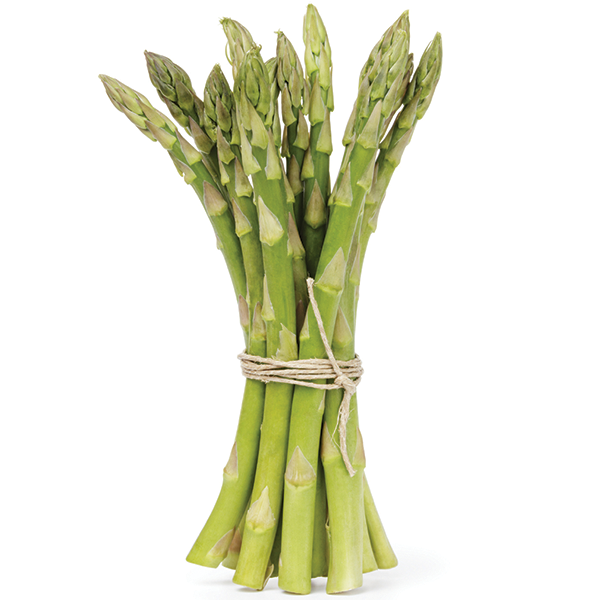
Promote asparagus year-round to encourage shoppers to think of it as more than just a springtime vegetable. Provide cross-merchandising options to use asparagus’s growing popularity to increase sales of other items, as well.
Shipping
30-lb. (minimum) pyramid cartons/crates, bunched or loose 28-lb. cartons/crates, bunched 24- to 25-lb. cartons, 161⁄2 packages 21-lb. lugs/cartons, loose 20-lb. 1⁄2-pyramid cartons 20-lb. cartons, bunched 15- to 17-lb. 1⁄2 pyramid cartons/crates, loose or bunched 15-lb. cartons, loose or bunched 14-lb. cartons 12-lb. 1⁄2 cartons 12-13 1⁄2-lb. 1⁄3 cartons/crates, bunched 11-lb. cartons/crates RPC: Not available. Foodservice packs Cartons, 6 5-lb. bags
Grades
United States U.S. No. 1 U.S. No. 2 Washington Washington XF (extra fancy) California stalk diameters Small – 3⁄16 inches and larger Standard – 5⁄16 inches and larger Large – 7⁄16 inches and larger Extra large – 10⁄16 inches and larger Jumbo – 13⁄16 inches and larger Colossal – 1 inch and larger
Handling
Temperature: 37 to 41 F, 2.8 to 5 C Relative humidity: 95-100% Mist: Lightly Typical shelf life: 10 to 21 days Highly sensitive to freezing injury. Asparagus seldom is stored for more than 10 days. If product is to be held more than 10 days, store at 35 F to avoid low-temperature chilling injury. Fresh asparagus deteriorates rapidly when low temperatures are not maintained. At room temperature, it quickly develops a woody tissue and loses sugar content. Good-quality asparagus will be fresh and firm with closed, compact tips and good green color.